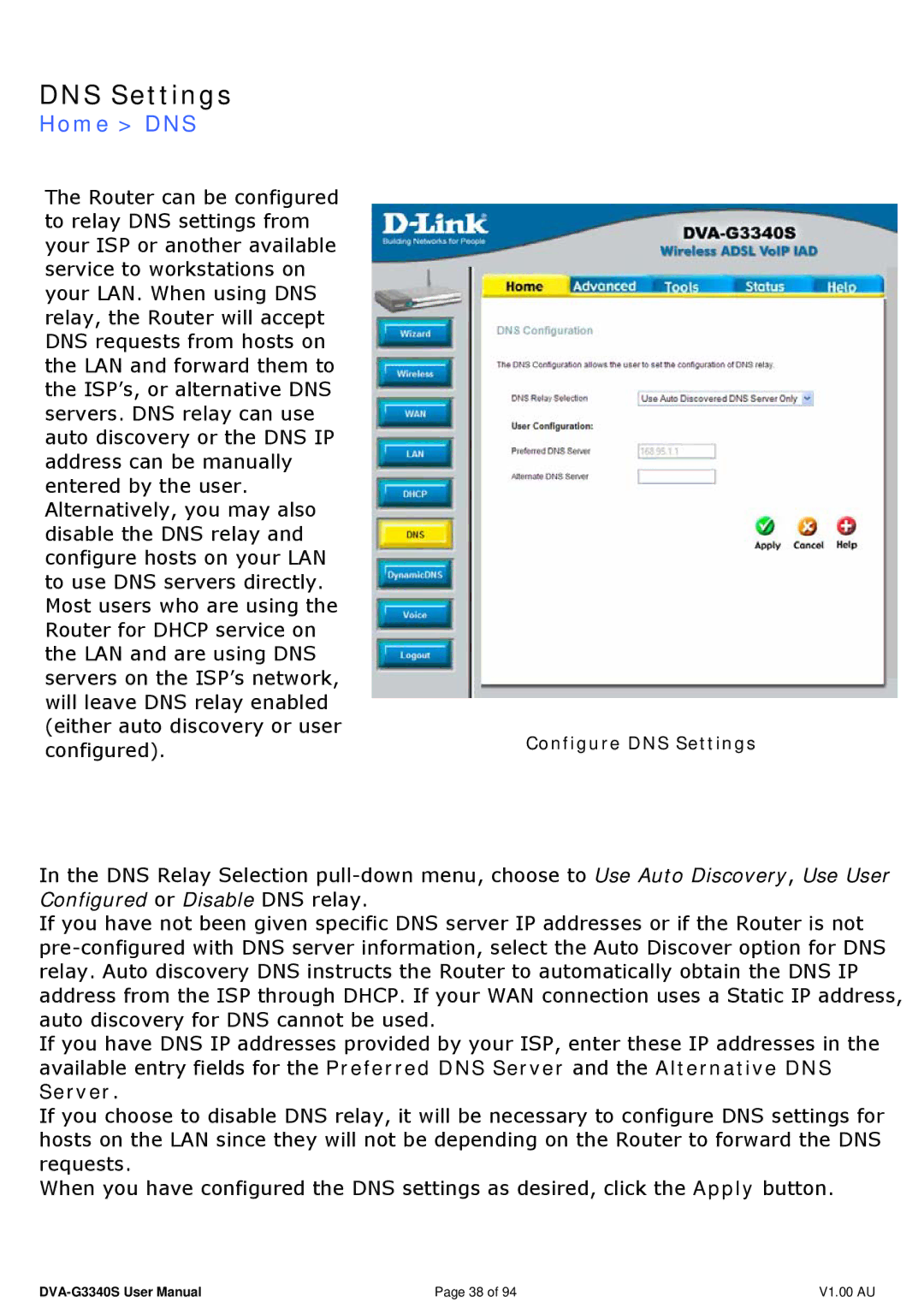
DNS Settings
Home > DNS
The Router can be configured |
| |
to relay DNS settings from |
| |
your ISP or another available |
| |
service to workstations on |
| |
your LAN. When using DNS |
| |
relay, the Router will accept |
| |
DNS requests from hosts on |
| |
the LAN and forward them to |
| |
the ISP’s, or alternative DNS |
| |
servers. DNS relay can use |
| |
auto discovery or the DNS IP |
| |
address can be manually |
| |
entered by the user. |
| |
Alternatively, you may also |
| |
disable the DNS relay and |
| |
configure hosts on your LAN |
| |
to use DNS servers directly. |
| |
Most users who are using the |
| |
Router for DHCP service on |
| |
the LAN and are using DNS |
| |
servers on the ISP’s network, |
| |
will leave DNS relay enabled |
| |
(either auto discovery or user | Configure DNS Settings | |
configured). | ||
|
In the DNS Relay Selection
If you have not been given specific DNS server IP addresses or if the Router is not
If you have DNS IP addresses provided by your ISP, enter these IP addresses in the available entry fields for the Preferred DNS Server and the Alternative DNS Server.
If you choose to disable DNS relay, it will be necessary to configure DNS settings for hosts on the LAN since they will not be depending on the Router to forward the DNS requests.
When you have configured the DNS settings as desired, click the Apply button.
Page 38 of 94 | V1.00 AU |
